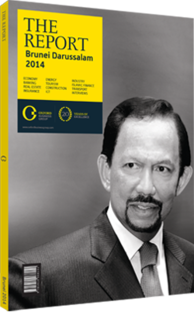Enhancing connectivity among ASEAN member states
Much of the procedural elements of Brunei Darussalam’s regional integration are intended to tear down any remaining trade barriers in order to facilitate greater trade between member countries. But in order to take full advantage of these new opportunities, a network of seamless interconnectivity between these markets must be established in terms of communications, institutional procedures and the physical movement of goods and labour. Seeking to prioritise the numerous steps which needed to be taken in order to create more robust connections, a Master Plan for ASEAN Connectivity (MPAC) was adopted at the 17th ASEAN Summit in Hanoi, Vietnam, in October 2010 in order to lay out a road map to be implemented from 2011 to 2015.
A total of four high-priority projects have emerged from the MPAC: the Sarawak to West Kalimantan Power Interconnection Project (between Malaysia and Indonesia); portions of the ASEAN Highway Network (AHN), the proposed Brunei Darussalam-IndonesiaMalaysia-Philippines-East ASEAN Growth Area ( BIMPEAGA) submarine fibre-optic cable; and further development of a regional nautical highway system within the BIMP-EAGA sub-region via the expansion of roll-on/roll-off (ro-ro) ferry network at priority ports.
Physical Links
Located within the West Borneo Economic Corridor, Brunei Darussalam is associated with three of these projects and has made substantial progress in recent years in terms of implementation. These include major infrastructure works in the Sultanate which were singled out in the MPAC plan for priority development as part of AHN. The first of these is the Pandaruan Bridge, also known as the Friendship Bridge, connecting Brunei Darussalam’s Temburong district and Sarawak’s Limbang district. Opened in December 2013, the 189-metre-long, 14-metre-wide crossing was the final missing link to be completed in the 2000-km Pan Borneo Highway stretching from Sematan, Sarawak on the south-west end of the island to Serudong, Sabah on the north-east end. Also known as the Trans-Borneo Highway, the road link is in the midst of a substantial upgrade project which is expected to continue until 2025. The second major project is an $8m upgrade of the Kuala Lurah border-crossing between Sarawak and the Sultanate completed in 2012. A new ro-ro route from Port Mura in Brunei Darussalam and Labuan in Malaysia launched in 2010 has had enough success that the operator is considering reopening the Muara-Menumbok ferry route from Brunei Darussalam to Sabah, which cuts out several border crossings.
The Sultanate is also a key player and one of the participating nations developing the BIMP-EAGA undersea fibre-optic cable as part of the ASEAN ICT master plan. The proposed project would connect Borneo (with landing stations in Brunei Darussalam and Sabah) to Mindanao in the Philippines with direct access to the US network through Asia-America Gateway submarine cable systems. According to Pg Mohd Salleh, the general manager of Brunei International Gateway, “The short-term goal is to have Brunei Darussalam serve as a regional hub, especially for the BIMP-EAGA, through its significant investments in submarine cables facilitated by the Brunei International Gateway by 2016.”
Open-Skies Policy
These works are complemented by the removal of institutional restrictions through the liberalisation of travel restrictions. One of the most important of these in terms of the movement of people across borders is the ASEAN’s open-skies policy designed to create a single aviation market through the gradual relaxation of barriers. The Multilateral Agreements of Air Services and the Full Liberalisation of Freight Services is intended to increase competition in the aviation sector among members by curtailing restrictions on where and when airlines can fly and land. The end result is a more efficient sector offering both passengers and cargo shippers more flights at lower costs which will bolster physical linkages within the region, thereby resulting in increased intra-regional travel. Although the final barriers are targeted to come down by the end of 2015, some ASEAN members remain reluctant to fully exercise all components of the policy.
You have reached the limit of premium articles you can view for free.
Choose from the options below to purchase print or digital editions of our Reports. You can also purchase a website subscription giving you unlimited access to all of our Reports online for 12 months.
If you have already purchased this Report or have a website subscription, please login to continue.

